|
|
This chapter provides product numbers for AGS+ spares. These spares offer you the ability to enhance the capabilities of installed systems.
The information in this chapter is organized into the following sections:
The AGS+ has nine slots, five of which are part of the ciscoBus (see Figure 161).
The ciscoBus controller card (CSC-CCTL2) is required only when an FDDI, Ethernet (C2MEC), HSSI, or four-port Token Ring card is installed. If a ciscoBus controller is not used, up to seven slots can be used for Ethernet, Ethernet/serial, Token Ring, and serial interface cards.
Figure 161 : AGS+ Card Slot Assignments
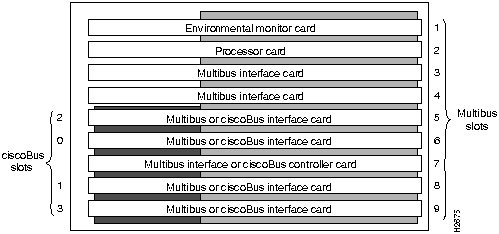
Table 341 lists the AGS+ card and port limits.
Table 341 : AGS+ Card and Port Limits
| Card Type | Interface Type | Maximum
Number of Cards |
Maximum
Number of Ports |
|---|---|---|---|
| Ethernet
|
MEC (ciscoBus) cards
Multibus cards |
4
7 |
24
14 |
| Token Ring | CTR (ciscoBus) cards | 4 | 16 |
| FDDI | -- | 4 | 4 |
| HSSI | -- | 4 | 4 |
| Serial
|
EIA/TIA-232
EIA/TIA-449 V.35 X.21 G.703 |
7
7 7 7 7 |
28
16 28 28 28 |
The ciscoBus controller card (CSC-CCTL2) is required only when a high-speed Ethernet (MEC), four-port Token Ring (CTR), FDDI, or HSSI card is installed.
The CCTL2 controller card has the following features:
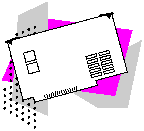
The ciscoBus can support the following card types:
HSSI
Table 342 lists the AGS+ ciscoBus interface cards. ciscoBus cards require the CSC-CCTL2 controller card.
Table 342 : AGS+ ciscoBus Interface Cards
| Cards | Ports |
|---|---|
| Ethernet1
CSC-C2MEC2 CSC-C2MEC4 CSC-C2MEC6 |
2 4 6 |
| Token Ring
CSC-C2CTR |
42 |
| FDDI
CSC-C2FCIT |
1 |
| HSSI
CSC-C2HSCI |
1 |
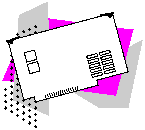
The Multibus can support the following card types:
Table 343 : AGS+ Multibus Cards
| Cards | Ports |
|---|---|
| Ethernet1
CSC-1E CSC-2E |
1 2 |
| Ethernet/synchronous serial
CSC-1E1S CSC-1E1T CSC-2E2S CSC-2E2T |
1 Ethernet, 1 low-speed serial 1 Ethernet, 1 high-speed serial 2 Ethernet, 2 low-speed serial 2 Ethernet, 2 high-speed serial |
| Synchronous serial
CSC-1S CSC-3S CSC-4S CSC-1T CSC-2T CSC-4T |
1 low-speed 3 full/half duplex serial interfaces(<64 kbps) 4 low-speed 1 high-speed 2 high-speed 4 high-speed |
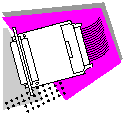
The AGS+ provides one console connection, five individual applique plates, and four large applique plates as shown in Figure 162. An applique consists of a network connector, a ribbon cable that connects the media interface card to network connector, and a plate.
The following types of appliques are supported:
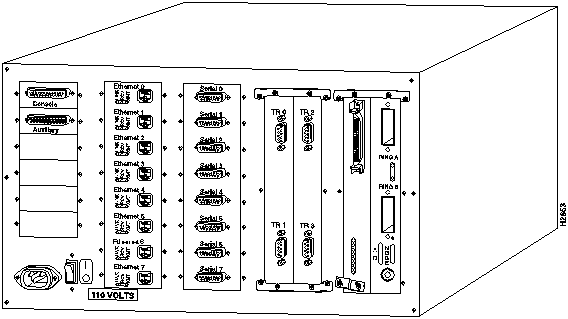
The AGS+ appliques are listed in Table 344. The following nomenclature applies:
| Media | Appliques |
|---|---|
| Console
Local Auxiliary |
APP-JC1 APP-JC2 |
| Ethernet
AUI1 10BaseT |
APP-JE1=, APP-LE2=, APP-LE4=, APP-LE6=, APP-LE8= APP-JT1, APP-LT2, APP-LT4, APP-LT6, APP-LT8 |
| Token Ring
CSC-C2CTR |
APP-LTR2 |
| FDDI | APP-LMM2, APP-LMS3, APP-LSM4, APP-LSS5 |
| HSSI | APP-LHS |
| Serial
EIA/TIA-232 EIA/TIA-232 SDLC V.35 SDLC EIA/TIA-449 V.35 X.21 G.703 |
DTE: APP-JR1, APP-LR2, APP-LR4, APP-LR6, APP-LR8 DCE: APP-JS1, APP-LS2, APP-LS4, APP-LS6, or APP-LS8 APP-JNZ1, APP-LNZ2, APP-LNZ4, APP-LNZ6, APP-LNZ8 APP-JVNZ1, APP-LVNZ4, APP-LVNZ6, APP-LVNZ8 DTE: APP-LF1, APP-LF2, APP-LF4 DCE: APP-LG1, APP-LG2, APP-LG4 APP-JX1, APP-LX2, APP-LX4, APP-LX6, APP-LX8 APP-JI1, APP-LI2, APP-LI4, APP-LI6, APP-LI8 APP-JG71, APP-LG72, APP-LG74, APP-LG76, APP-LG78 |
The AGS+ provides a choice of two appliques for its console port. The APP-JC1 provides a local console connection, while the APP-JC2 provides an auxiliary console connection. An LED with cable (APP-LEDM=) is available.
There are two types of Ethernet appliques, AUI and 10BaseT.
AUI appliques have the following characteristics:
10BaseT appliques have built-in transceivers and RJ-45 connectors.
The AGS+ supports the CSC-C2CTR card appliques. These appliques have the following characteristics:
The CSC-C2CTR does not include appliques, which must be purchased separately.
FDDI appliques support a single Class A FDDI dual attachment station (DAS) interface that can be connected as a DAS, a single attachment station (SAS), or a dual homing device.
The HSSI applique supports one high-speed serial connection at speeds ranging from 2 to 52 Mbps.
The AGS+ supports six types of synchronous serial appliques:
EIA/TIA-232 appliques have the following characteristics:
EIA/TIA-232 SDLC appliques have the following characteristics:
EIA/TIA-449 appliques have the following characteristics:
V.35 appliques have the following characteristics:
X.21 appliques have the following characteristics:
G.703 appliques have the following characteristics:

Ethernet, Token Ring, EIA/TIA-232, EIA/TIA-449, and V.35 connector plates are available as spares. The following tables list product numbers.
Table 345 : AGS+ Connector Plates
| Plate Type | Cutouts for Connectors | Product
Number |
|---|---|---|
| Ethernet | 1 | PLT-IE1= |
| 2 | PLT-LE2= | |
| 4 | PLT-LE4= | |
| 6 | PLT-LE6= | |
| 8 | PLT-LE8= | |
| Token Ring | 2 | PLT-LB2= |
| 4 | PLT-LB4= |
Table 346 : AGS+ EIA/TIA-232 Serial Connector Plates
| Cutouts for
Connectors |
Product
Number |
|---|---|
| 1 | PLT-IR1= |
| 2 | PLT-LR2= |
| 4 | PLT-LR4= |
| 6 | PLT-LR6= |
| 8 | PLT-LR8= |
Table 347 : AGS+ EIA/TIA-449 Serial Connector Plates
| Cutouts for
Connectors |
Product Number |
|---|---|
| 1 | PLT-LF1= |
| 2 | PLT-LF2= |
| 4 | PLT-LF4= |
Table 348 : AGS+ V.35 Connector Plates
| Cutouts for
Connectors |
Product Number |
|---|---|
| 1 | PLT-IW1= |
| 1 | PLT-LV1=1 |
| 2 | PLT-LV2=1 |
| 4 | PLT-LV4=1 |
| 2 | PLT-LW2= |
| 4 | PLT-LW4= |
| 6 | PLT-LW6= |
| 8 | PLT-LW8= |

The AGS+ connector plate applique limits are listed in Table 349.
Table 349 : AGS+ Connector Plate Applique Limits
| Applique | Individual | Large Plate 1 | Large Plate 2 | Large Plate 3 | Large Plate 4 |
|---|---|---|---|---|---|
| Console | 1 or 2 | -- | -- | -- | -- |
| Ethernet/10BaseT | 5 | 8 | 8 | 8 | 8 |
| Token Ring | 5 | 4 | 4 | 4 | 4 |
| FDDI | -- | -- | -- | 2 | 2 |
| HSSI | -- | -- | -- | 2 | 2 |
| EIA/TIA-232 | 4 | 6 | 8 | 8 | 8 |
| EIA/TIA-449 | -- | 2 | 4 | 4 | 4 |
| V.35 (high-density) | 4 | 6 | 8 | 8 | 8 |
| X.21 | 4 | 6 | 8 | 8 | 8 |
| G.703 | 4 | 6 | 8 | 8 | 8 |
| UltraNet | -- | -- | -- | 2 | 2 |
For cable part numbers and illustrations, refer to the chapter "Cables and Transceivers."
For power cords, refer to the chapter "Power Cords."
Cisco IOS software for the AGS+ is included in the basic price of the system. For example, the Cisco IOS Release 10.0 software product (for example, SW-GA-10.0.8) includes a feature license for standard software (for example, FR-SA-10.0.X). Specific protocols and features are provided through software feature license agreements, which include bridging and packet switching. For example, Frame Relay is covered by a packet-switching feature license. For APPN, you must purchase Enterprise with APPN.
Table 350 provides spare software options for the AGS+, and Table 351 describes software features.
Table 350 : AGS+ Software Product Numbers
| Description | Product Numbers
Cisco IOS Release 11.0 |
Product Numbers
Cisco IOS Release 10.3 |
Product Numbers
Cisco IOS Release 10.0 |
|---|---|---|---|
| Router software | SW-GA-11.0.x= | SW-GA-10.3.x= | SW-GA-10.0.x= |
| Router software with APPN | SW-GAN-11.0.1 | -- | -- |
| Bridging | FR-BA-11.0.X | FR-BA-10.3.X | FR-BA-10.0.X |
| Packet switching1 | FR-XA-11.0.X | FR-XA-10.3.X | FR-XA-10.0.X |
| Standard feature | FR-SA-11.0.x= | FR-SA-10.3.x= | FR-SA-10.0.X= |
| APPN feature | FR-NA-11.0.1 | -- | -- |
Table 351 : Cisco IOS Release 11.0 Software Features for the AGS+
| Category | Protocols/Features | Feature License |
|---|---|---|
| LAN support | IP, LAN extension host software, Novell IPX, AppleTalk I and II, DECnet IV and V, OSI, XNS, Banyan VINES, Apollo Domain | Standard |
| Transparent and translational bridging, multiring | Bridging option | |
| WAN services | HDLC, PPP1, ISDN2, IPXWAN 2.0 | Standard |
| X.25, Frame Relay, SMDS | Packet-switching option | |
| WAN optimization | Header and link compression, dialondemand, dial backup, bandwidthondemand, custom and priority queuing, access lists, access security, snapshot routing | Standard |
| IP routing | RIP, IGRP, Enhanced IGRP, OSPF, BGP, EGP, ESIS, ISIS, PIM, NHRP | Standard |
| Other routing | IPX RIP, NLSP, RTMP, AURP, SRTP | Standard |
| IBM support | SRB/RSRB, SRT, DLSw+3, SNA and NetBIOS WAN optimization via local acknowledgment, caching and filtering, SDLC Integration, SDLC-to-LAN conversion (SDLLC), SDLC transport (STUN), TG/COS, Downstream PU concentration (DSPU) | Bridging |
| QLLC and Frame Relay SNA support (RFC 1490) | Bridging and packet-switching options | |
| APPN4 | APPN | |
| Management | AutoInstall, SNMP, Telnet | Standard |

Microcode is card-specific firmware that can be replaced with programmable read-only memory. As new software and hardware features are introduced, the microcode for affected cards must be updated in order to implement new features or to operate with new software.
Recommended microcode levels are dependent on the card and software release level. The most current Microcode Release Note is available on the Cisco Connection Documentation, Enterprise Series CD and CCO. The Microcode Release Note contains the following information:
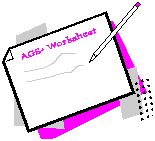
This section helps you enhance an existing AGS+ by adding interface cards. Refer to the "AGS+ Product Considerations" and then fill out the AGS+ Worksheet to determine when to upgrade microcode, how to verify power requirements, and how to optimize card and connector capacity. Note that the section "AGS+ Product Considerations" contains some products that are no longer offered for sale.
To determine the AGS+ components you need, complete these steps:
In the AGS+ sample worksheet, a customer made the following upgrades:
After checking the information in the section "AGS+ Product Considerations," the following requirements were noted in the "Upgraded AGS+ System" section of the sample worksheet:
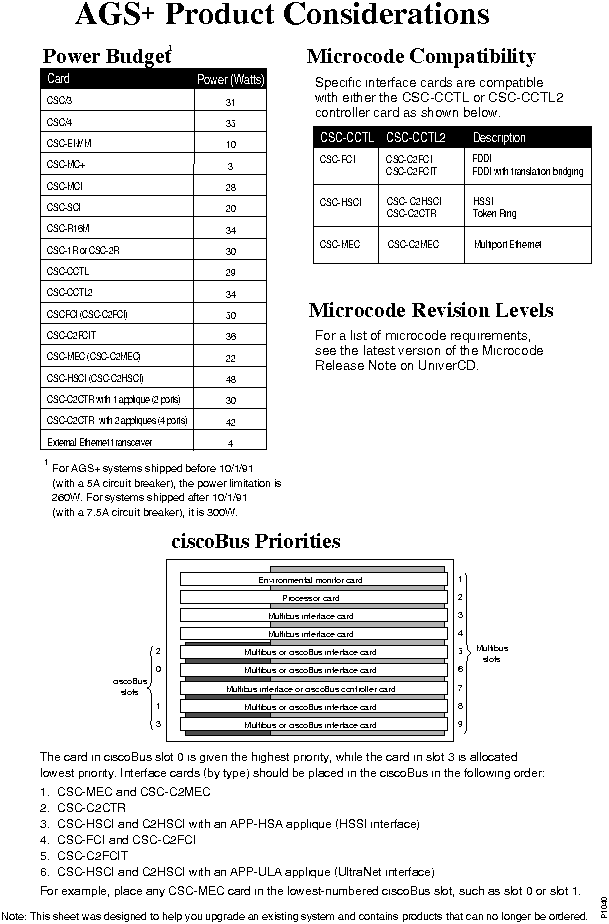
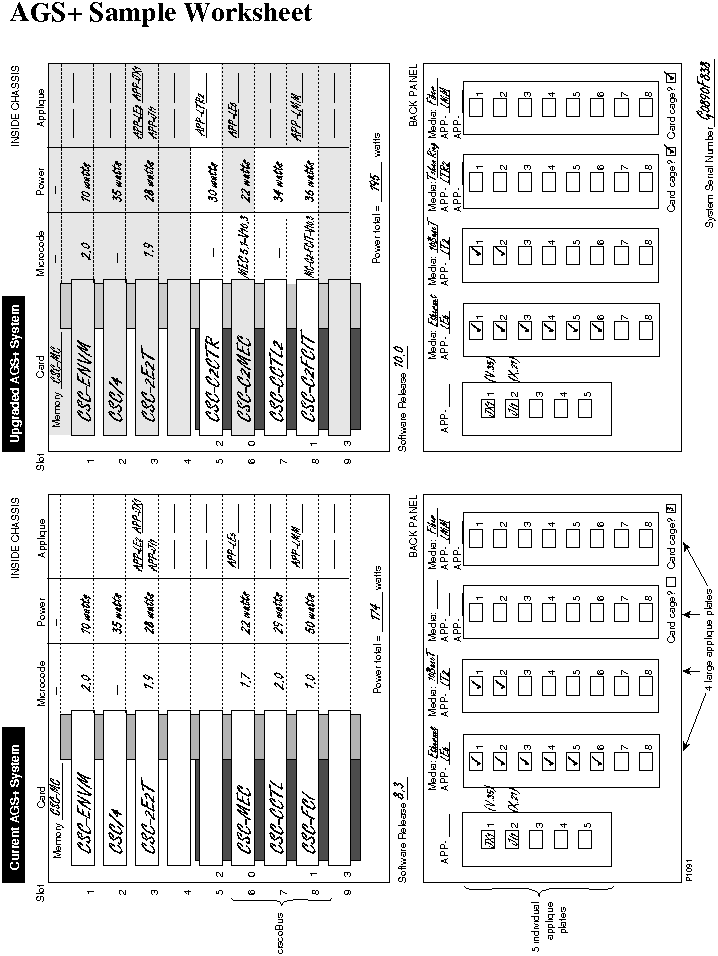
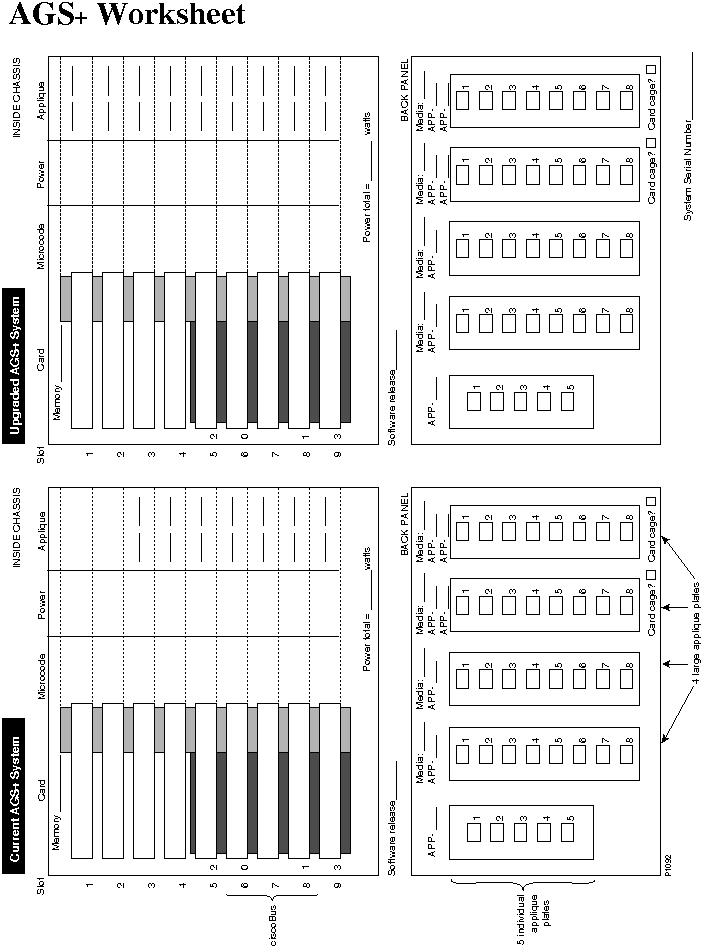
|
|
Copyright 1988-1996 © Cisco Systems Inc.